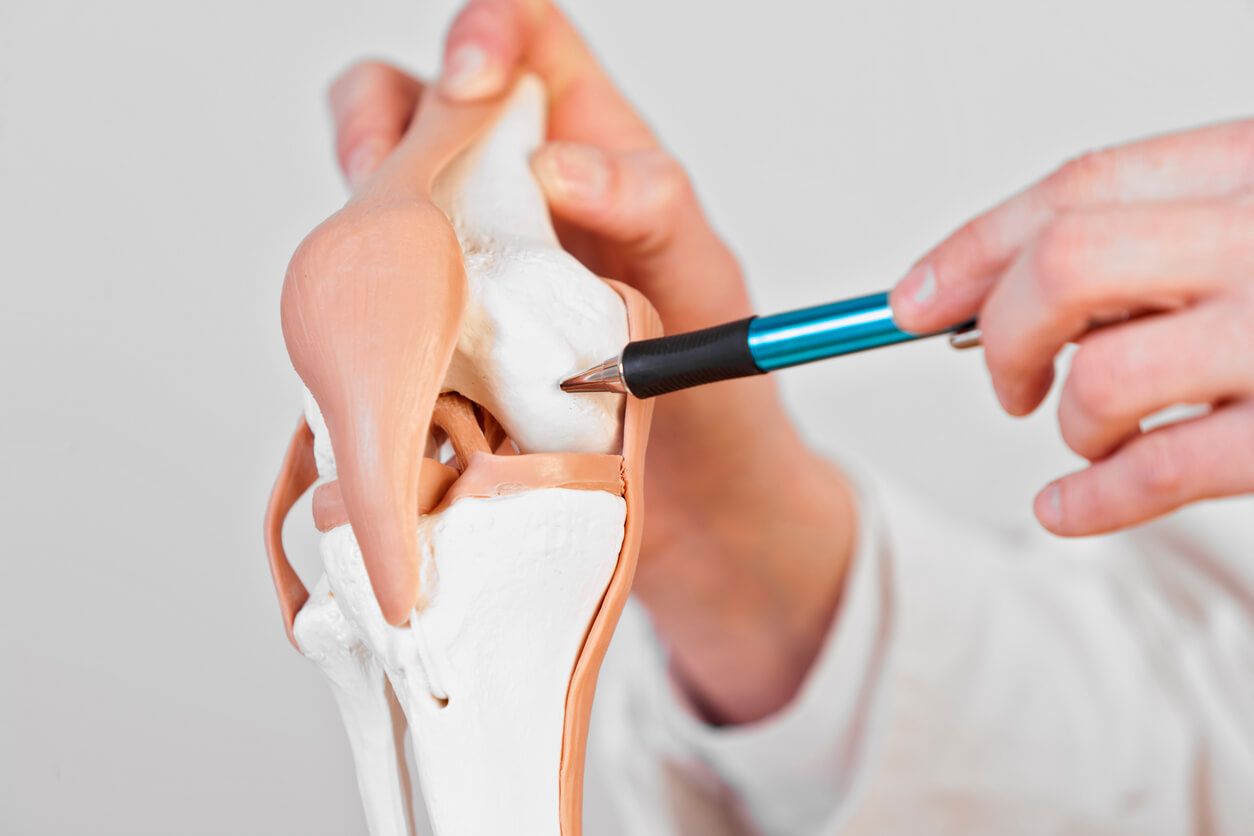Cartilage is our primary connective tissue, serving a variety of structural and functional purposes throughout the body. Where cartilage covers the ends of our bones, it reduces friction, protecting our joints from the stress of weight-bearing movements. Damage to cartilage can be painful and restrict movement.
Types of Cartilage and What They Do
There are three basic types of cartilage:
- Elastic, the most flexible, is found in the outer ear, nose, and parts of the lungs
- Fibrocartilage is the strongest and is found in the knees, between the hips and pelvis, and between the discs of the spine
- Hyaline Cartilage, the most springy, is at the end of bones in our joints, in the nasal septum, around the trachea, and between the ribs
Functions of Cartilage
The principal functions of cartilage are to:
- Reduce friction and cushion our joints, helping to support our weight when we move
- Connect and hold our bones together
- Act as essential structural material, as in our outer ears
In children, the cartilage at the ends of long bones will gradually become bone tissue.
Cartilage Damage and Its Causes
At Long Island Spine Rehabilitation Medicine, we see many patients suffering severe pain from cartilage damage due to accidental injuries or deterioration. Fortunately, we are able to provide them with several effective nonsurgical treatments to relieve their pain, increase their range of motion, and promote healing.
While deterioration most often occurs due to the normal wear and tear of aging (osteoarthritis), it can be hastened by serious injury. Cartilage is also associated with conditions such as rheumatoid arthritis. Risk factors for cartilage degeneration are obesity, lack of regular exercise, and certain pre-existing disease factors.
Symptoms of Cartilage Damage
Cartilage damage leads to increased stress on the bones that have lost protective cushioning, causing the symptoms that may include:
- Pain in the affected joint which is also typically tender to touch and warmer than usual
- Swelling and inflammation
- Stiffness and restricted range of motion
- In severe cases, bleeding in the joint (hemarthrosis) and/or locking of the joint
Although cartilage damage most commonly occurs in the knee or between the vertebrae (as a herniated disc), other sites, such as the elbow, wrist, ankle, shoulder, or hip joints can also be affected.
Diagnosis of Cartilage Damage
In all likelihood, when you consult with our physiatrists you may not know what is causing your pain. Long Island Spine Rehabilitation Medicine is well-equipped to diagnose your condition with accuracy by taking a comprehensive medical history, performing a physical exam, and administering an imaging test, such as an X-ray, MRI, or CT scan. In some cases, we may perform an arthroscopy, inserting a tube-like camera into the affected site to view the area with greater precision.
Treatments
Treating cartilage damage is complicated by the fact that cartilage tissue is not supplied with blood, which delays healing. Our doctors are committed to approaching cartilage repair, as we approach all damaged tissue, holistically. We will only refer you to a surgical specialist as a last resort. The majority of cases of cartilage damage can be successfully treated with one of our noninvasive or minimally invasive forms of therapy, including:
- NSAIDs (non-steroidal anti-inflammatory drugs)
- Injections of corticosteroids and analgesics to relieve pain and reduce inflammation at the source
- Acupuncture to alleviate pain and promote healing
- Platelet-Rich Plasma (PRP) therapy to accelerate healing
- Pulsed Electromagnetic Field (PEMF) technology which not only alleviates pain and inflammation but increases blood flow to your cells to promote more rapid healing
- Injections of hyaluronic acid, known as viscosupplementation, into the knee
In some cases, we may recommend physical therapy, including electrical stimulation, to assist in restoring strength and range of motion. You should be aware that there are also several innovative treatments being tested for use to repair cartilage, including bone marrow aspirate concentration and injections of stem cells.
Contact Us Today to Find Out if Your Pain Is Caused by Cartilage Damage
Long Island Spine Rehabilitation Medicine specialists can diagnose your problem quickly as well as carefully. More importantly, we may well be able to treat your condition successfully without surgery. Stop suffering needlessly and give our trained pain management experts a call.
